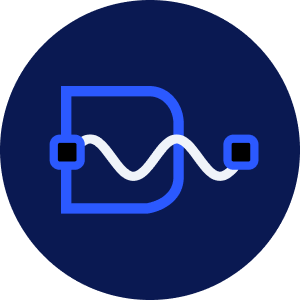- AI Models
- April 06, 2023
Breaking the Barriers of Segmentation: Meta AI's 'Segment Anything Model'
Meta AI is spearheading AI innovation with its latest creation - the "Segment Anything" model. This new AI technology, still under development, promises to revolutionize numerous sectors with its capabilities.
Key Features of the Segment Anything Model (SAM)
- Any Object, Any Image The model can adeptly segment any object from any image, requiring only a single click.
- Zero-shot Generalization Boasting a promotable segmentation system, the model displays remarkable zero-shot generalization. This means it can handle unfamiliar objects and images without needing additional training.
- Massive Training Dataset It draws strength from a colossal dataset encompassing 11 million images and 1.1 billion masks, which it was trained on.
- Robust Performance The model showcases strong zero-shot performance across a wide variety of segmentation tasks.
The Technical Foundation of SAM
- Transformer Architecture At the heart of the model lies a transformer architecture, a type of neural network renowned for its effectiveness in natural language processing tasks.
- Self-supervised Learning The model employs a novel self-supervised learning technique for training. This approach bypasses the need for explicit instruction in segmenting objects, focusing instead on predictive tasks that indirectly facilitate learning.
- Platforms The image encoder operates efficiently on a GPU with PyTorch. The prompt encoder and mask decoder can function on a CPU or GPU across multiple platforms that support the ONNX runtime directly through PyTorch or after conversion to ONNX.
- Model Size The image encoder comprises 632M parameters, while the prompt encoder and mask decoder together have 4M parameters.
- Inference Time The image encoder processes in approximately 0.15 seconds on an NVIDIA A100 GPU, and the prompt encoder and mask decoder process in about 50ms on a CPU in the browser using multithreaded SIMD execution.
- Training Data and Duration The model underwent training on the SA-1B dataset and required 3-5 days for training on 256 A100 GPUs.
- Output and Support The model predicts object masks but does not generate labels. It currently supports images or individual frames from videos, not videos.
- Source Code Availability The source code for the model can be found on GitHub.
Currently, Meta AI is offering the Segment Anything model as a research demo. This presents a golden opportunity for AI enthusiasts, researchers, and industry professionals to test the model's capabilities and examine its performance across different tasks.
Single Click, Countless Possibilities
Meta AI has unveiled its revolutionary AI model, the Segment Anything Model (SAM), which can precisely isolate any object in an image with a single click. SAM is a novel segmentation system that showcases zero-shot generalization, implying it can recognize and handle unfamiliar objects and images without additional training.
Diverse Input Prompts: a Step Beyond Traditional Segmentation
The model is built around various input prompts. These prompts allow SAM to carry out various segmentation tasks without additional training. It can accept interactive points and boxes, automatically segment everything in an image, and even generate multiple valid masks for ambiguous prompts.
Seamless Integration: The Bridge Between AI Systems
A distinct feature of SAM is its promotable design, enabling seamless integration with other systems. For instance, it could use a user's gaze from an AR/VR headset to select an object in the future.
This adaptability extends to the output of SAM as well. Its output masks can serve as inputs to other AI systems for tracking objects in videos, enabling image editing applications, being lifted to 3D, and facilitating creative tasks like collaging.
Zero-shot Generalization: Learning to Understand Objects
The core strength of SAM lies in its zero-shot generalization. It has learned to grasp what constitutes an object, allowing it to deal with unfamiliar objects and images without additional training. This training was achieved by harnessing millions of images and masks through a data engine that facilitated a cycle of interactive annotations, updates to the model, and repeated iterations to refine the model and the dataset.
Efficiency and Flexibility: the Twin Pillars of Sam's Design
SAM's efficiency and flexibility are highlighted in its design. It is split into a one-time image encoder and a lightweight mask decoder that can run in a web browser within a few milliseconds per prompt. This design serves a dual purpose — enabling real-time interaction with the model and powering its data engine.
The Future of Segmentation: Democratizing and Consolidating Processes
SAM's launch aims to democratize segmentation by providing a general Segment Anything Model and a vast dataset, the Segment Anything 1-Billion mask dataset (SA-1B). The Segment Anything project aims to reduce the need for task-specific modeling expertise, training computing, and custom data annotation for image segmentation. SAM offers a comprehensive segmentation solution that merges interactive and automatic segmentation into one model. This consolidation is empowered by its promotable interface and training on a diverse, high-quality dataset of over 1 billion masks.
Beyond the Image: SAM's Immense Future Applications
The future applications of SAM are immense, spanning various domains. It can be used in AR/VR to select objects based on a user's gaze, in creative applications like image editing and collaging, and even in scientific studies to track and study natural occurrences. With its innovative design and application, SAM ushers in a new era of image segmentation.
Frequently Asked Questions
What are the features of the Segment Anything Model?
What is the architecture of the Segment Anything?
How many masks are there in the Segment Anything?
Is Segment Anything Model open source?



